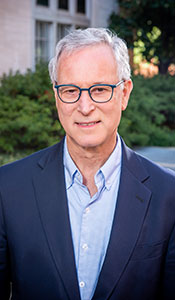One of the most impactful events that our program sponsors each year is the UAB NF Symposium Family Day, a free half-day event that gives NF families and patients an opportunity to hear a series of presentations on a range of NF-related topics from clinical experts. Co-sponsored by the UAB NF Program and the Children’s Tumor Foundation (CTF), the Symposium also offers a venue for NF families to connect with others who are sharing the same journey, which can be especially helpful for those who are newly diagnosed. Unfortunately, this year’s NF Symposium Family Day was cancelled due to concerns about COIVD-19, although we’re currently considering the possibility of rescheduling the Symposium as a virtual event for a date in 2021. Through our program’s frequent use of Zoom and other online meeting platforms during the pandemic, we realize that a virtual event can be easier for many people to attend than an in-person event. However, a disadvantage of a virtual event is that it eliminates the possibility of face-to-face interaction and networking that has become a meaningful part of this event in past years. I’ll provide updates here as our plans develop regarding the possibility of a rescheduled, virtual event next year.
Brain MRI Findings in NF1
In this post, I’d like to discuss a few characteristic brain MRI findings that can occur in people with NF1, including T2 hyperintensities. These are also sometimes referred to as “unidentified bright objects” (UBOs) or “NF spots.” These are benign lesions that appear brighter on specific MRI sequences, predominantly in the basal ganglia, thalamus, brainstem, and cerebellum. These lesions do not enhance with contrast on MRI and are considered an incidental finding that do not require additional follow-up. However, if the lesions enhance with contrast on MRI or exert pressure in the brain, this could indicate the presence of a low-grade glioma, which requires more active follow-up.
Most children with NF1 have these changes, but these eventually regress and may disappear without causing neurologic problems. Some literature suggests that people with a larger number of these changes, or their presence in specific brain regions, have an increased risk of learning disabilities. I haven’t found that MRI changes are that useful in clinical practice to predict learning problems, however. The presence of these signal changes has not been used as part of the diagnostic criteria for NF because similar changes sometimes can also occur in individuals who do not have NF. Therefore, brain MRI is not a critical component of the diagnostic evaluation of NF1, unless there are signs or symptoms suggestive of a problem in the brain.
In some children with NF1, the corpus callosum – a large c-shaped bundle of nerve fibers that connects the two hemispheres of the brain – is thicker than normal. This condition may be associated with learning problems, but not with other neurological problems. Another incidental MRI finding sometimes seen in people with NF1 is the presence of Chiari malformation, a structural defect in which part of the cerebellum and brainstem extends below the foramen magnum and into the upper spinal canal. In most people, this condition is mild and doesn’t cause any problems. However, in some individuals it can cause headaches or neurologic problems and requires surgical correction.
A final NF complication that may be diagnosed by brain MRI is the occurrence of occlusion of a major artery to the brain. This occurs in a small proportion of affected individuals, and in most cases is asymptomatic. The reason there may be no symptoms seems to be that alternative pathways of blood flow develop, as the occlusion seems to occur slowly, probably over a period of years. In some instances, however, this collateral circulation may not be able to keep up with demand and can lead to symptoms due to transient reduction of blood flow, or even a stroke. Detection of this altered blood circulation can be done with MRI, particularly a method called MR angiography, which visualizes blood vessels. It’s not something we do routinely in all individuals with NF1, but may be done if there are signs or symptoms suggestive of a problem with blood flow. Sometimes you may hear the term “moyamoya,” which is the name given when multiple small collateral blood vessels are visualized. Moyamoya can occur to anyone in the population, usually for unknown reasons, but is more common in those with NF1. If an occluded artery to the brain is identified, it is common to prescribe baby aspirin as a mild blood thinner in the hope of reducing the risk of stroke. In some cases, a surgical procedure can be performed to attach a blood vessel in the brain to another blood vessel to bypass the blockage. This disorder of cerebral blood flow is one example of a risk of occlusion of arteries that can occur in some individuals with NF1, affecting for example the renal arteries (arteries to the kidneys) or others. I’ll go into more detail about this in a future post.
